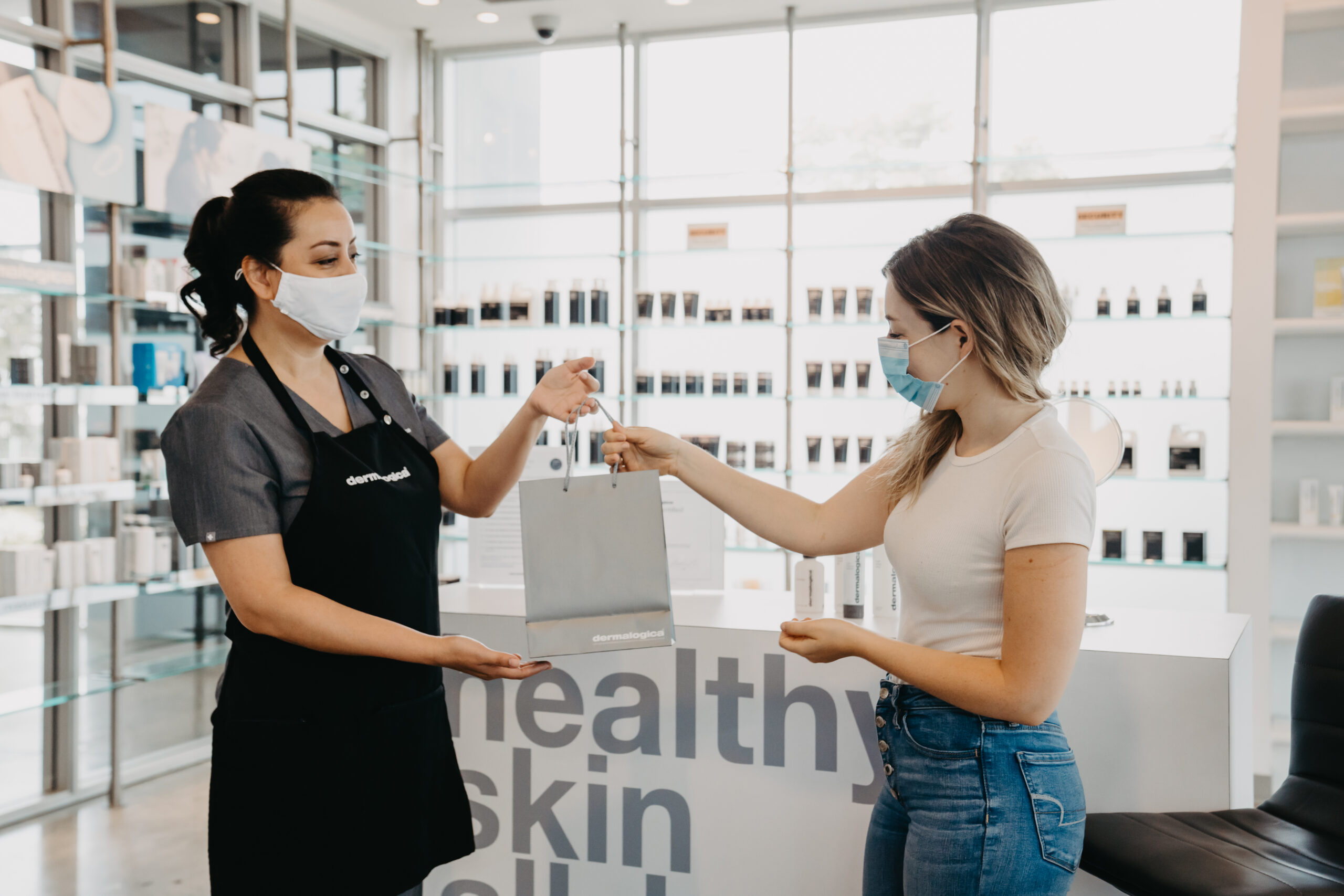
When treating and speaking with clients about hyperpigmentation, it helps to understand the science behind dark spots – and behind skin tone more broadly.
Let’s begin by gaining a better understanding of melanin. Most clients know that melanin is the protein that gives our skin its natural color – but many people aren’t aware that it is also known to protect skin against the harmful effects of UV (ultraviolet) rays, oxidative stress, and DNA damage. Here’s one way to think of it: we hold an umbrella over our heads to protect against the sun and rain. In the same way, melanin forms a protective cap over our skin cells’ DNA.
Much like sunscreen, melanin actually has an SPF. Scientists debate exactly how much SPF melanin has, but it’s around SPF 1.5-2 – and could even be as high as 4. While that may not sound like much, remember that an SPF of 2 is double the amount of sun protection as an SPF of zero: the melanin in our skin absorbs or redistributes approximately half of the
UV light we’re exposed to.
Melanin also presents free radical scavenging properties to help protect skin against oxidative stress. Reactive Oxygen Species (ROS) – better known as free radicals – are produced in the skin under the influence of UV radiation and pollution. These compounds are highly reactive and can induce DNA damage in our epidermal skin cells.
Types of Melanin
The color of our skin is determined by the amount and type of melanin produced, as well as its distribution in the surrounding skin cells (keratinocytes). There are two main types of melanin produced in the skin:
• Eumelanin is a brown-black pigment, and the most common pigment that we see in skin. The content and intensity of
this melanin indicates its level of UV protection.
• Pheomelanin is the yellow-red pigment that we see in fair skin and red hair. This type of melanin offers no UV protection.
What is a Melanocyte?

Melanocytes are the cells responsible for producing melanin and transferring it to the surrounding skin cells (keratinocytes). Within the melanocyte, melanin is produced and packaged into.
As seen in the diagram above melanocytes bear some resemblance to an octopus. The “armâ€-like protrusions are called dendrites; these dendrites extend into the surrounding keratinocytes to deliver melanin envelopes called melanosomes in a process known as melanogenesis. One melanocyte provides melanin to approximately 36 keratinocytes!
The primary determinant of skin color isn’t the number of melanocytes a person has; rather, it’s their activity. All humans appear to almost have the same number of melanocytes and keratinocytes (a ratio of 1:36). The size and number of melanosomes (melanin-containing envelopes), however, can vary dramatically between individuals.
Melanocytes are also closely related to Langerhans cells, which are part of our immune system and activated by inflammatory mediators. The same triggers that activate a Langerhans cell also activate a melanocyte. This is why injuries and breakouts often result in hyperpigmentation. When the inflammation subsides, the inflammatory and melanin production both revert to normal levels. Over time, this hyperpigmentation rises to the surface and will eventually slough off.
The Melanogenesis Process

Let’s put together the pieces to understand melanogenesis, the process by which melanin gets deposited in the skin. While pigment formation is an ongoing process in our skin, certain triggers – like sun, pollution, free radicals, hormones and inflammation – can accelerate it. These triggers signal the melanocyte cell to begin producing melanin.
We know that melanin is a protein – and to create a protein, an Amino Acid (Tyrosine, in this case) and an enzyme (Tyrosinase) are required. The Tyrosinase enzyme is activated through a process called glycosylation. It then reacts with Tyrosine, the Amino Acid, which is found within the melanocyte. This initiates a series of oxidation reactions that result in the formation of melanin.
Once the melanin is formed it is packaged into melanosomes, which are then transferred into the adjoining keratinocytes (skin cells) via the dendrites. The melanosomes cluster over the nucleus of the keratinocytes to protect skin cells’ DNA. Over time, each keratinocyte moves upwards through the epidermis; when it eventually reaches the surface, it sloughs off in skin’s natural cell turnover process.
Related articles
How Does Menopause Affect Your Skin?
Healing the Industry, the World and Ourselves
Controlling Aging Skin
stay in the know
Get special offers on the latest developments from Front.



